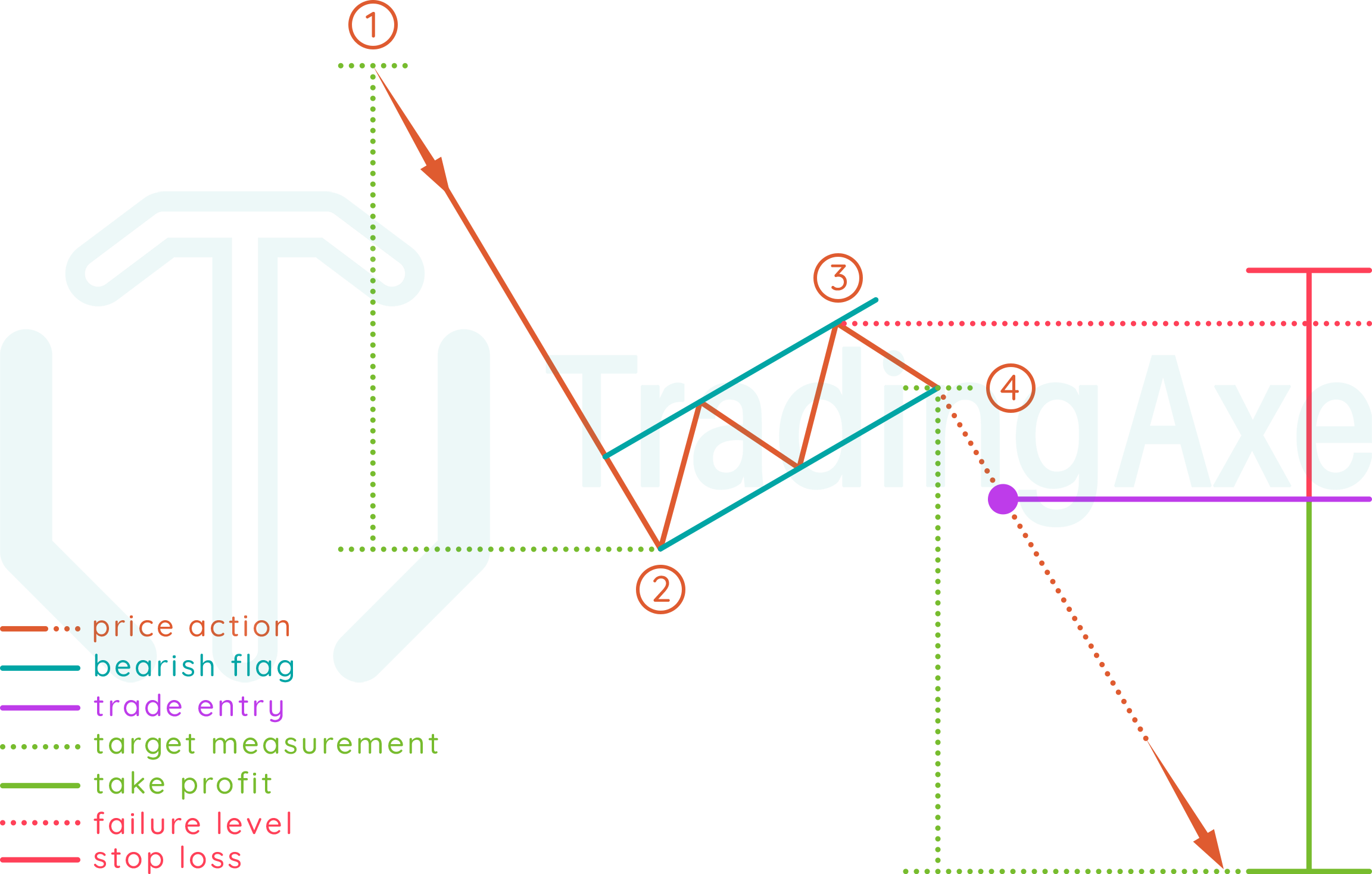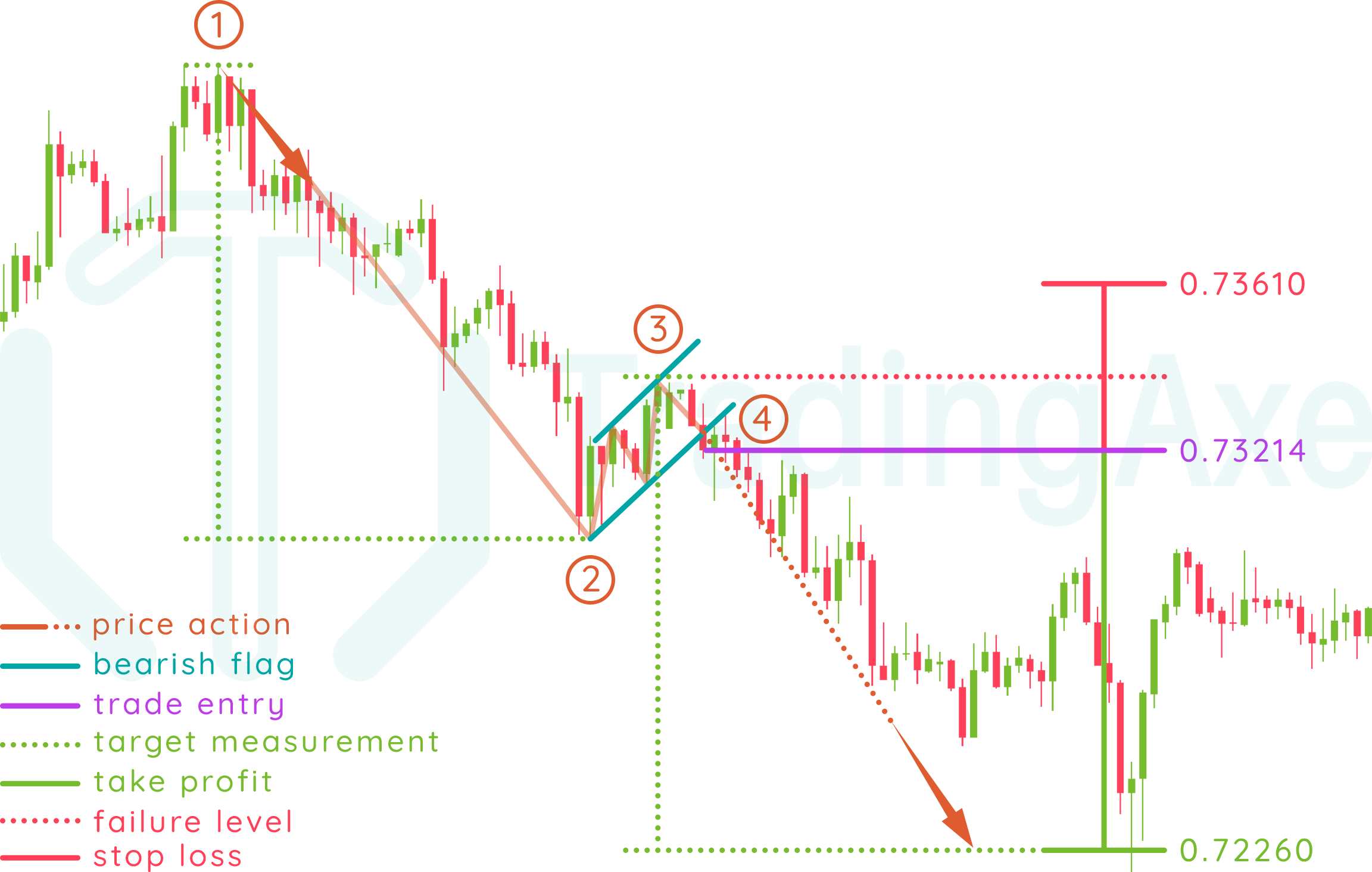
Entry: after breaking the flag's lower border at point (4)
Take profit: identified by measuring the flag's pole height, which is the vertical distance between points (1) and (2), that measurement is then applied from the breakout rate (4)
Stop loss: the flag's highest high (3)
BEARISH FLAG PRICE ACTION
This chart pattern starts forming with bears already in control of the exchange rate's sharp downtrend. When bulls enter the market, trading is contained briefly in an up-sloped range. Bears then break that range's lower resistance, and the exchange rate continues its downtrend.
Let's break down the pattern formation!
A sharp downwards price action is initiated from (1) till it finds the first resistance (2), creating the flag's pole.
Price action reverses direction from the first resistance (2) and starts forming higher lows and higher highs in a narrow flag-like formation, till it finds the highest support in that formation at point (3)
The pattern is completed when price action reverses direction from the highest support (3) and goes downwards till it breaks the flag's lower border at point (4)
NOTES ON BEARISH FLAG
Direction
Continuation
Type
Bearish
Occurrence
High
Common term
Short-Medium
Before the breakout, at least two lows (including the flag's pole low) and two highs are the minimum for a valid pattern, more touches are acceptable.
The flag's pole is a sharp downwards price action.
Volume is usually high at the flag's pole, as well as when breaking the flag's lower border.
This pattern is commonly found on short-term and medium-term time frames.
BEARISH FLAG REWARD:RISK
This pattern is known for its high R:R.
R:R depends on how narrow the flag formation (2-3) is, compared to the flag's pole height (1-2)
Always remember that the stop loss level explained above is absolute, the actual stop loss rate for your trade setup should be a bit beyond those levels to give the trade setup some room to breathe, and of course, calculations for position size and R:R should be done with respect to that rate.

